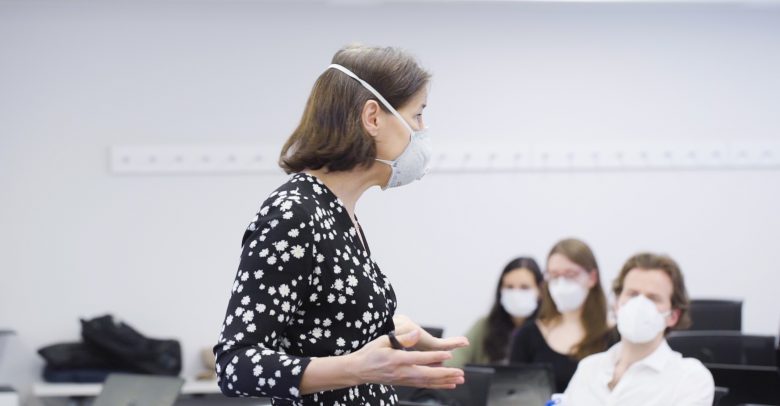IE University has decided to reopen its campus after months of closure. However, with the rise of COVID-19 cases, the safety of the community may be at risk.
In March 2020, the pandemic forced universities to finish their semesters through remote learning. Students and faculty faced a new, digitized model of education and had to learn how to adapt to this new reality. Everyone patiently awaited for September to arrive, thinking everything would return to normal. However, with COVID-19 cases rising throughout the summer, universities had an important decision to make: should campuses risk re-opening for the fall semester?
Most institutions, including Ivy Leagues such as Harvard, have chosen to continue using remote-only learning throughout the 2020-21 academic year to preserve the safety of their students and faculty. IE University, however, is one of the few universities that was willing to take the risk and reopen its campus. IE even implemented a new teaching method called “liquid learning” that has allowed students to attend classes regardless of their current location.
Nevertheless, following the reopening, IE was temporarily forced to deliver classes online as COVID-19 cases among students were rapidly rising. Thus, the threat of a second lockdown raises the question of whether or not it was safe to resume face-to-face classes. With so many universities remaining online, was this the right decision?
IE University has taken extensive measures to keep its community healthy. For example, IE implemented a mandatory ‘Daily Follow’ questionnaire, redesigned classrooms to allow social distancing, and created an on-campus test centre (that almost all students have visited by now). The IE medical team agreed that the University has taken exceptional precaution to minimize the risk of infection. In fact, they stated that IE was one of the only universities in Spain to do so. Professor Ruth Palmer agrees that the “University is doing a very good job at implementing the recommended protocols” and feels safe during lessons.
Palmer adds that, even though delivering classes online is the only way to be completely risk-free, “the health and well-being of the IE community needs to be looked at more holistically”. We need to ask ourselves, is it psychologically healthier for an 18-year-old who wants to experience university life to be locked up at home? Moreover, pedagogically speaking, face-to-face classes are much more beneficial for both the teacher and the student, making this risk one worth taking.
Students are ecstatic that classes have resumed on campus. Manon Fisher, a first year BBA student, expressed that being in the classroom surrounded by peers and professors has been more beneficial for her learning experience. After months of Zoom classes, she is overjoyed to finally be back in the classroom and enjoys the flexibility of IE’s hybrid lessons.
Professor Javier Garcia Gonzalez believes that liquid learning will become the new reality. He argues that “once you have the model and start to develop it, the possibility to develop it further should remain an option”. This shift in the model of education has been discussed for a long time. However, the pandemic has been the catalyst of these events because it gave us the necessary push to make it happen.
Nevertheless, although IE is taking all the necessary precautions to keep its community safe, they cannot control what happens off campus. The IE infirmary team confirmed that regardless of the University’s efforts to protect its community, students are increasing the risk of infection by going to illegal parties and gatherings. Palmer also states that she is more preoccupied about the students’ health. “Socializing in an unsafe way outside of classes” can lead to “accidentally contracting the disease” and then contaminating other people, creating a domino effect. The unanswered question about whether or not campus will remain open thus depends on the students’ behaviour outside of the classroom. Consequently, it can be argued that IE is indirectly increasing the risk of an outbreak by permitting students to interact externally. Life on campus may be risk-free, but this all depends on the students conduct outside of classes.
The infirmary team made an interesting remark explaining that students are being treated like football players. The regular COVID-19 tests serve as a way to guarantee that the University will remain open. This hints that the University has an economic incentive to re-open campus and these tests allow them to calculate how long they will remain open.
Overall, it’s safe to assume that the decision to re-open campus has been beneficial for the IE community. Even though the community’s health and safety is the University’s number one priority, the future of the campus depends on the conduct of the students. We have to remember that the virus is only ten months old and the future is still uncertain.
Guest Writer: Olivia Arias Voss
Note: This article is a submission by Communications students Olivia Arias Voss. If you’d like to submit your own article, contact ieustork@gmail.com.







Wow! Great article. But what about the mandatory covid passports that the university had implemented? Are they still a thing?